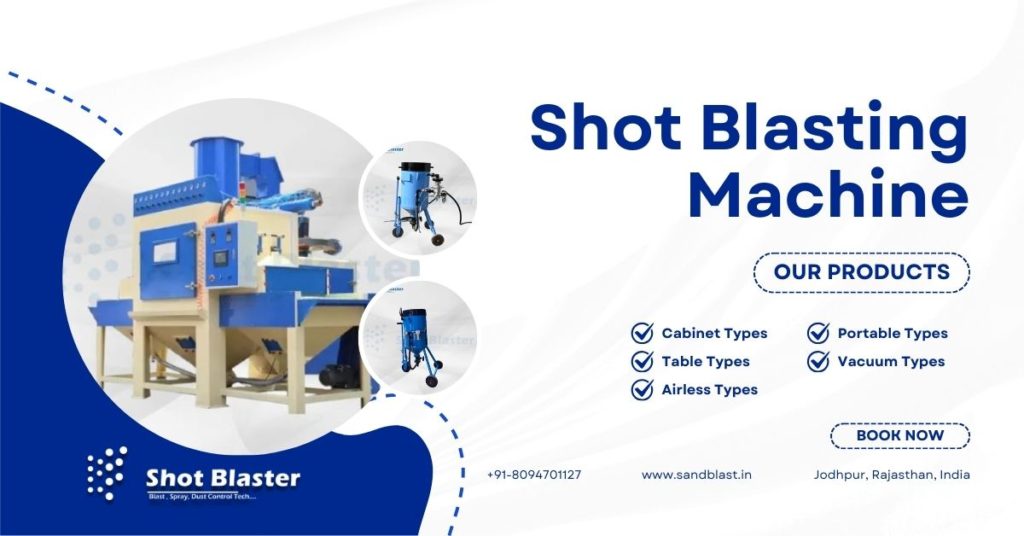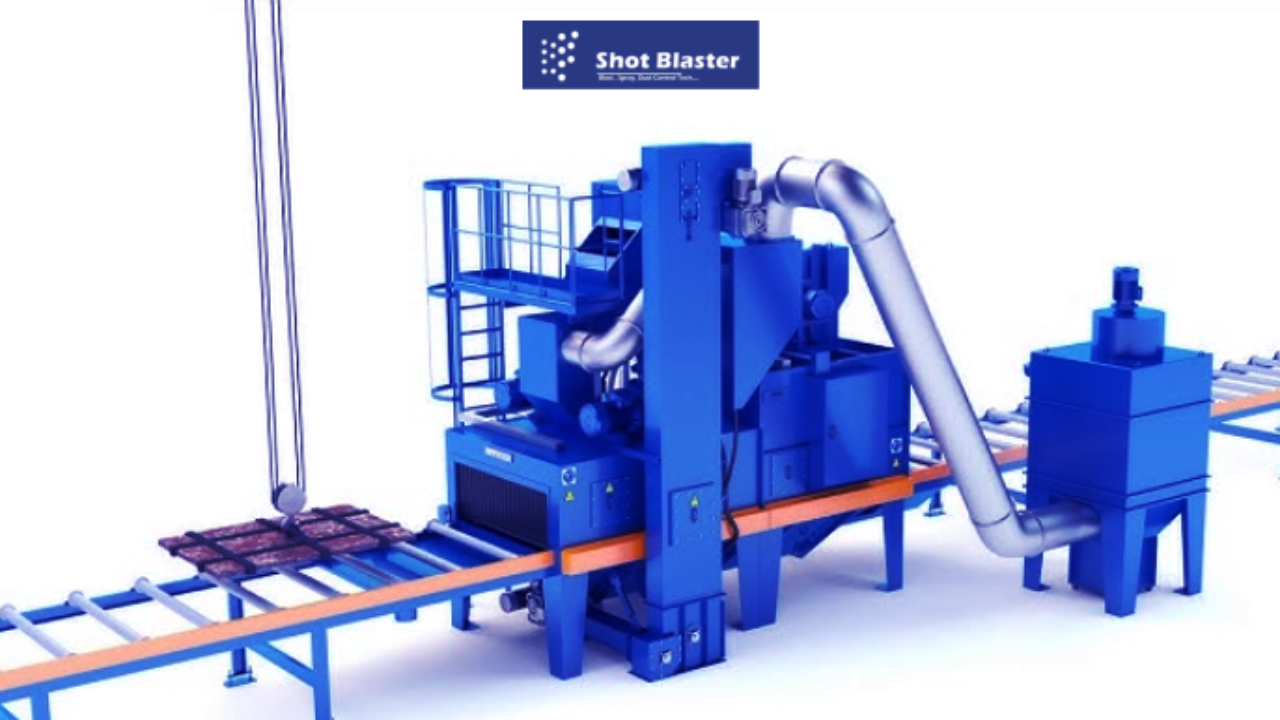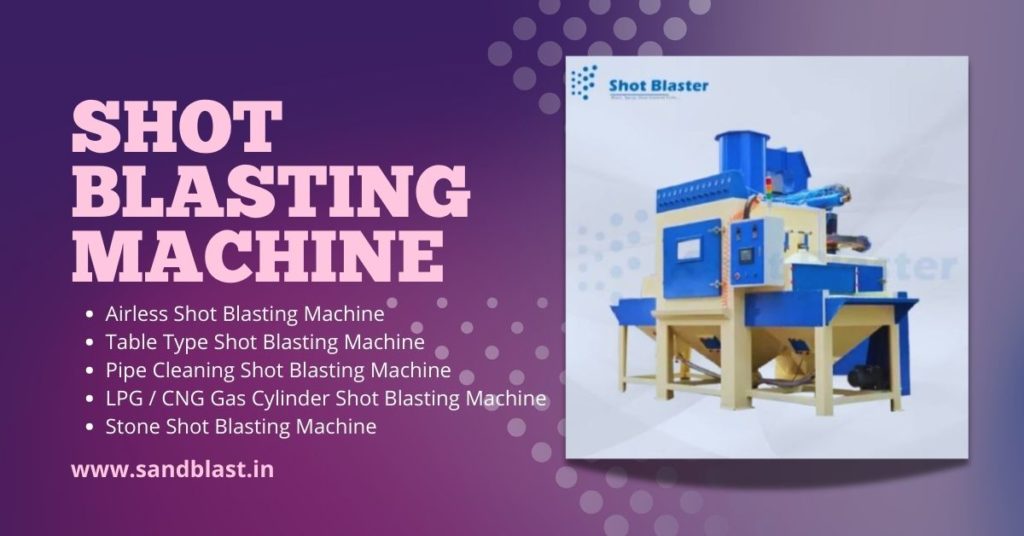Discover the crucial role of shot blasting in surface preparation. Learn how shot blasters ensure superior results for various industrial applications, improving surface quality and durability.

Introduction
In the world of industrial and construction work, surface preparation is a key step that determines the success of a project. Whether you’re working on steel, concrete, or other materials, ensuring a clean and properly prepared surface is crucial for bonding, coating, or treatment processes. One technique that has become indispensable in this process is shot blasting.
But what exactly is shot blasting? Why is it so important, and how does it impact the final result of a project? In this article, we’ll explore the crucial role of shot blasting in surface preparation and examine how a shot blaster can transform a rough, contaminated surface into a perfect canvas for further treatments.
What is Shot Blasting?
At its core, shot blasting is a mechanical surface preparation method that uses high-velocity abrasive particles to clean, smooth, or texture a surface. A shot blaster propels these particles (usually steel shot, grit, or other abrasives) at a surface, cleaning away contaminants such as rust, old coatings, or dirt. The result? A smooth, clean, and ready-to-treat surface, perfect for further finishing steps like coating or welding.
This process is commonly used in a wide range of industries, from automotive manufacturing to construction, and even in the repair of concrete surfaces. So, let’s dive deeper into why shot blasting plays such a vital role in surface preparation.
The Importance of Surface Preparation
Before we talk more about shot blasting, it’s crucial to understand why surface preparation matters in the first place. If you skip this step or do it improperly, it could lead to several issues down the line. These might include:
- Poor adhesion: Coatings, paints, or adhesives won’t stick properly to a surface that’s not prepared correctly.
- Corrosion or rust formation: Without proper cleaning, contaminants like oils, dirt, or rust can remain on the surface, leading to corrosion.
- Weakened structural integrity: For welding, a clean surface ensures a strong bond, which is essential for the overall strength of a structure.
- Reduced durability: Whether you’re applying a coating or a treatment, the longevity of the finish relies heavily on how well the surface is prepared.
This is where shot blasting truly shines—it’s a fast, efficient, and effective way to ensure that surfaces are in optimal condition for any follow-up treatments.
How Does Shot Blasting Work?
The Mechanics of Shot Blasting
Shot blasting involves a few critical steps:
- Abrasive Material Selection: A shot blaster uses a specific type of abrasive material, typically steel shot, grit, or even sand, depending on the requirements of the surface being prepared.
- High-Speed Propulsion: The abrasive material is propelled at high velocity towards the surface using centrifugal force or compressed air.
- Surface Cleaning: The impact of the abrasive particles effectively removes contaminants like rust, dirt, old coatings, or corrosion.
- Surface Profiling: After the cleaning, the surface may also be textured or roughened, which helps improve the adhesion of paints, coatings, or other treatments.
It’s a relatively simple process, but its effectiveness can’t be overstated. The result is a well-prepared surface that allows for better bonding and increased durability.
Types of Shot Blasting
There are different types of shot blasting techniques, each suitable for different applications:
- Air Blasting: This involves using compressed air to blast abrasive material against the surface. It’s commonly used for smaller jobs or delicate surfaces.
- Centrifugal Shot Blasting: This method uses a mechanical system to propel the shot or grit at the surface, which is ideal for larger industrial projects like cleaning steel structures.
- Wet Blasting: In some cases, water is mixed with the abrasive material to reduce dust and provide a smoother finish. This method is used for sensitive materials where dust control is crucial.
Choosing the right shot blasting technique is essential for achieving the desired surface finish and ensuring that the surface preparation aligns with project requirements.
Applications of Shot Blasting
Shot blasting is employed in a variety of industries and applications. Below are some common areas where this technique plays a vital role:
1. Steel and Metal Industries
In metal industries, shot blasting is used to clean and prepare steel for welding, coating, or galvanizing. It removes rust, old coatings, and other contaminants, ensuring a clean and smooth surface for better results.
2. Concrete Surface Preparation
When preparing concrete floors or other surfaces for coating, shot blasting is used to remove surface contaminants and create a rough profile. This ensures that coatings, sealers, or epoxy treatments bond properly to the surface.
3. Bridge and Infrastructure Maintenance
Shot blasting is a go-to method for cleaning steel and concrete structures in the maintenance of bridges, tunnels, and other infrastructure. It helps remove corrosion and contaminants, preventing the deterioration of these critical structures.
4. Automotive Manufacturing
In automotive manufacturing, shot blasting tool is used to clean and finish various components, such as engine parts, wheels, and chassis. The process ensures that these parts are free from debris, rust, and other imperfections that could affect their performance.
5. Aerospace and Aviation
In the aerospace sector, shot blasting plays a role in cleaning parts before coating or painting. It’s used to remove debris from components like turbine blades, improving their performance and durability.
Benefits of Shot Blasting in Surface Preparation
The crucial role of shot blasting in surface preparation lies in its numerous benefits. Here are some of the key advantages:
1. Efficient Cleaning
Shot blasting quickly removes contaminants like rust, dirt, and old coatings. The process can be completed much faster than manual cleaning methods, saving time and labor costs.
2. Improved Surface Adhesion
By cleaning and roughening the surface, shot blasting helps improve the adhesion of coatings, paints, and other treatments. This ensures that these finishes will last longer and perform better over time.
3. Enhanced Durability
A clean surface is essential for durability. Shot blasting not only removes contaminants but also helps strengthen the surface by creating a textured profile that increases the bond between materials and coatings.
4. Versatility
Shot blasting can be used on a wide range of materials, including metals, concrete, and stone. This versatility makes it an ideal solution for many industries, from construction to automotive manufacturing.
5. Environmentally Friendly
Compared to other methods like sandblasting, shot blasting is often more environmentally friendly. It generates less dust and doesn’t require harmful chemicals, making it a safer and more sustainable option.
Common Shot Blasting Equipment
There’s a range of shot blasting machines available, designed for different purposes and types of projects. Here are some of the most common:
1. Portable Shot Blasters
These are smaller, mobile units that can be used for spot cleaning or surface preparation in tight spaces. They’re ideal for smaller projects and can be easily moved around a worksite.
2. Centrifugal Blast Machines
These machines are larger and more industrial, suitable for heavy-duty applications like cleaning steel structures or automotive parts. They are typically used in factory settings and can handle larger surfaces with ease.
3. Automated Shot Blasting Systems
For large-scale operations, automated systems are used to consistently and efficiently clean surfaces. These systems are programmed to handle continuous processing, making them ideal for high-volume work.
Read more – https://riyasingh258.blogaaja.fi/reliable-shot-blasting-machine-provider-company-in-india/
FAQs about Shot Blasting
1. Is shot blasting the same as sandblasting?
No, while both methods involve abrasive particles, shot blasting typically uses harder, more durable media, like steel shot, and is usually more efficient and environmentally friendly compared to sandblasting.
2. How does shot blasting differ from other surface preparation methods?
Shot blasting is unique in that it not only cleans surfaces but also profiles them, creating a textured finish that improves adhesion. Other methods, like chemical cleaning, may not provide the same level of surface roughness.
3. Can shot blasting be used for all materials?
Shot blasting is highly versatile and can be used on various materials, including metals, concrete, and stone. However, the choice of abrasive material and blasting technique may vary depending on the surface type.
4. How do I know which shot blasting technique to choose?
The choice of shot blasting method depends on factors such as the material type, the condition of the surface, and the desired result. Consulting with a professional or equipment supplier can help determine the best option.
Conclusion
The crucial role of shot blasting in surface preparation cannot be overstated. It’s an essential process in many industries, ensuring that surfaces are thoroughly cleaned, properly textured, and ready for further treatments. Whether you’re working with metal, concrete, or other materials, shot blasting offers a reliable, efficient solution that leads to superior results.
By improving adhesion, enhancing durability, and offering versatility across different applications, a shot blaster helps make sure your surfaces are in optimal condition for whatever comes next.
So, the next time you’re embarking on a project that requires surface preparation, consider the benefits of shot blasting—your surfaces will thank you!
Continue reading – https://riyasingh12384.wixsite.com/shotblaster/post/heavy-duty-structure-cleaning-with-shot-blasting-machines-for-industrial-projects




